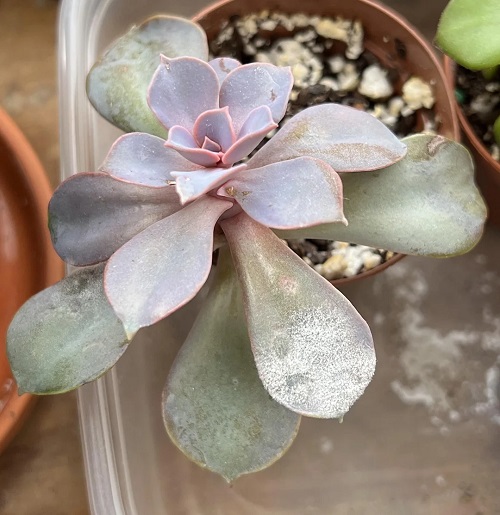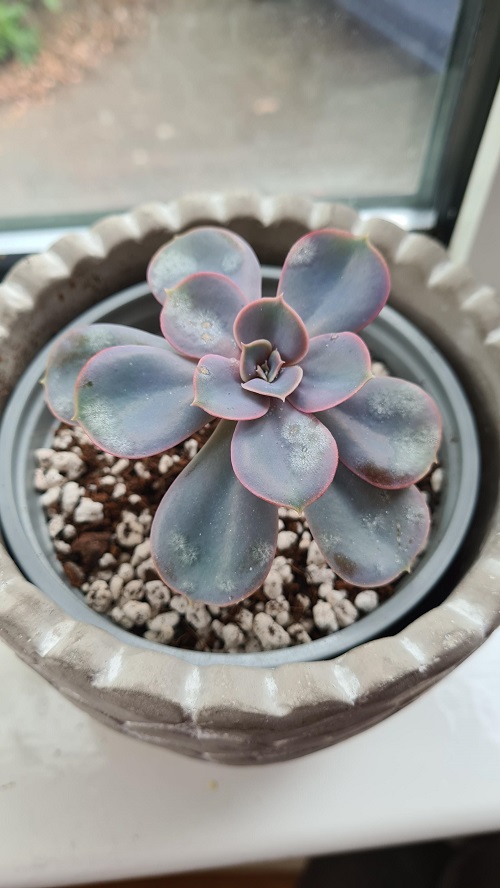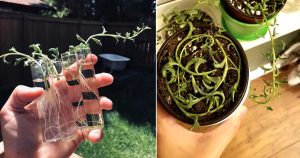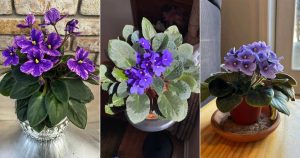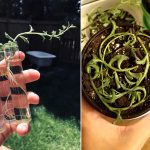If you are looking for an effective solution on How to Treat Powdery Mildew on Succulents, then the best preventive techniques are here!
Powdery mildew is a common fungal issue affecting various plants, including succulents. Knowing the causes and treatment on time is essential for keeping your succulents healthy and beautiful.
What Do You Mean By Powdery Mildew?
Powdery Mildew is a type of fungus that looks like circular powdery spots or coatings on the surface of plants. It can be on leaves, stems, buds, or flowers. This is caused by fungi spores of the Erysiphaceae family. With the help of the wind, they travel, land, germinate, and infect the host plant.
Time of Occurrence: Powdery mildew generally develops in late spring or early summer, particularly when new foliage appears, unlike other mildew, which occurs on warm days or cool evenings.
Effects on Plants: As it grows, it covers the plant with white to gray dusty powder and makes photosynthesis hard. As a result, plants get stressed, weaken, and start looking ugly. You will see wither, yellow foliage, reduced blooms, and other signs of sick plants.
Additionally, powdery mildew spreads quickly, so it is important to stop it from spreading. How? You can remove it by rubbing the leaves temporarily, but to eliminate the fungus, you must follow the preventive measures you will find while reading the article.
Powdery Mildew on Succulents
Powdery mildew covers the green foliage of succulent plants with a dusty white powder. It extracts nutrients to multiply and spread, hindering the growth of the host plant. However, it is pretty tricky to inspect succulents compared to other plants. Why? Because the affected part is not prominent enough, instead you will spot scab-like lesions on the leaves in brown or rust color. What makes it most tricky is their similar appearance to the symptoms of sunscalds or other diseases.
In case of powdery mildew, you must examine your succulent plant carefully and look for signs of spores. This is most common in Kalanchoe, Euphorbia, and Echeveria species, so do not miss observing the tips of leaves if you have these in your collection!
How to Treat Powdery Mildew on Succulents
Once you notice your plant is infected, you must immediately take the necessary steps. Remove the parts showing powdery mildew with clippers if on a few leaves. Then, do not compost them; throw them away from the plants, as powdery mildew can also spread from those separated parts. Clean your hands and the tool with alcohol wipes.
Methods of Treating Powdery Mildew on Succulents
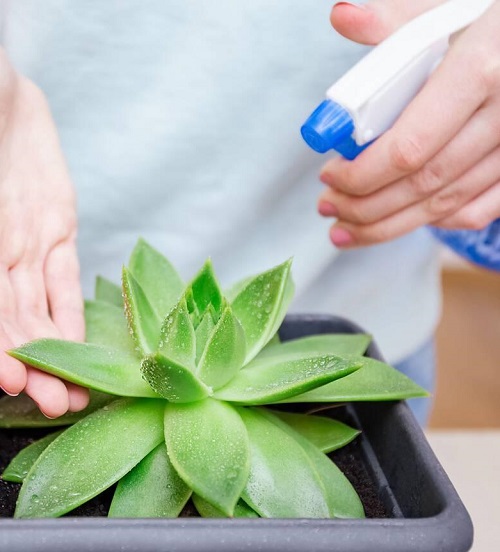
These methods will help you to save the life of your succulents by stopping the spread of the fungus:
1. Apply Lecithin
It is a common substance found in organisms and used as a food additive. It’s considered a low-risk biological fungicide. When applied regularly, it inhibits the growth of fungal structures and spore development, effectively slowing the spread of powdery mildew on succulent plants.
2. Try Garlic Spray
For this, you don’t need to buy anything from outside; just a few garlic cloves and water will be required. Crush a handful of garlic cloves in 1-2 cups of water and boil them for 20-30 minutes. Dry it and spray it, and you are done! You can change the quantity according to your requirements as well.
3. Try Hydrogen Peroxide
If you have Hydrogen Peroxide, you can use it to get rid of this disease. How? You only have to add a spoonful to half a liter of water and keep it for 10-15 minutes. Then, use it to rinse the succulents containing powdery mildew, leave them to dry, and do it once every 10 days. Look here at the detailed tutorial.
4. Vinegar Solution
Try this; it is the best one! Although it works slowly, the aftereffects are amazing. Add 2-3 tablespoons of vinegar to a gallon of water and mix it well. Apply in the evening, leave it overnight on the affected parts of the succulents, and rinse off in the morning with clean water.
5. Make Use of Neem Oil
Neem oil is a commonly used organic fungicide for powdery mildew and other minor infections. First, test it on a small portion, then apply it to the affected parts of your succulents. Before applying, move your plant to the shade, as the full sun can scorch the leaves. After the treatment, they can be placed back to their original place.
Note: Applying neem oil can affect the germination and penetration of other spores, so apply only when necessary.
6. Apply Compost Tea
Mix 1:4 parts compost tea and water in a big container and let it settle. After 24 hours, strain the solution and spray it on your succulent plants. The after-effects will surprise you!
7. Apply Baking Soda Spray
To control powdery mildew on succulents with this method, you need to mix 1 tablespoon of baking soda, 1/2 teaspoon of liquid non-detergent soap, and 1 gallon of water well in a spray bottle. Before spraying, water your succulent plant well. Then, spray it on the affected succulent leaves, including the underside portion, but avoid too much, as it can burn the leaves.
Tip: First, test the small area to see the plant’s reaction. Apply weekly and reapply after the rains as well. Plus, do not spray when the plant is in full sun.
8. Organic Fungicide
Though these fungicides can’t reverse the damage caused by powdery mildew, they can definitely kill the existing pathogens. Sulfur and copper-based fungicide sprays are mostly helpful to prevent powdery mildew. Read the product instructions carefully to avoid any further issues.
9. Apply Milk
Milk? Yes, milk can be used to treat powdery mildew; not only this, it’s good for your plants, as it has calcium, protein, and vitamin B12 that promote growth and health in them.
So, take a 1:9 ratio of water and milk, mix it well, and spray on the affected areas. After that, rinse your plant with clean water to remove the residue of powdery mildew or leftover milk from the surface.
Some Tips to Prevent Succulents From Powdery Mildew
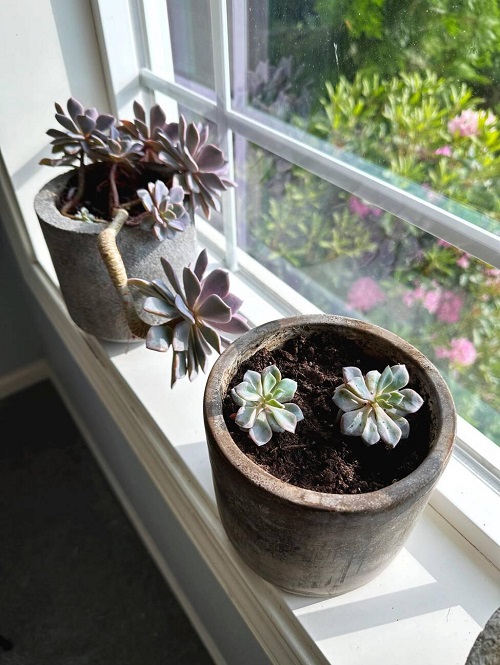
- You should make sure that your succulents have ample space for adequate airflow. Overcrowding can lead to moisture retention and increase the risk of fungal diseases like powdery mildew.
- Position your succulents in areas with good air circulation. This is especially crucial in indoor environments or greenhouses where air movement is minimal. Avoid tight, enclosed spaces that can foster fungal growth.
- Shift your succulents to locations where they receive full sunlight. This helps minimize the conditions in which powdery mildew thrives, such as low light and high humidity.
- You must incorporate natural preventative sprays into your care routine, especially if you’ve previously encountered fungal issues.
Dealing with powdery mildew on succulents can be challenging, but with the right preventive measures and treatments, you can keep your plants healthy and thriving. Do try these methods and share your experiences in the comments below! Let’s help each other create beautiful, mildew-free succulent gardens.

